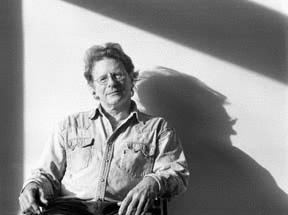Although they depict faraway places, the photographs in “The Cretan Glance” are the opposite of travel pictures.
Rather than the recording transient impressions, the new exhibit in the Playhouse lobby depicts the beloved home photographer Terry Moyemont discovered in 1989.
“My American-Greek architect friend, George Vlastos, had asked me to come help with the olive harvest in his family’s village, Vizari, on the slopes of Mt. Idi in central Crete,” Moyemont said. “The work was hard, the landscape rugged and alluring, the people kind and elegant.”
Moyemont spent three more winters in Vizari and finally bought a 400-year-old home there. He began reconstruction, but the project was back-burnered for five years, through a marriage, a move to Montana and a subsequent divorce.
“I also produced video documentaries in Prague, Boston and Macedonia,” Moyemont, a former video professor at University of Illinois at Urbana, said, “all the while holding conversations with myself in muttered Greek.”
When Moyemont remarried in 1999, he brought his wife, Terri Stanley, to Crete. Like Moyemont had a decade earlier, Stanley fell in love with the landscape and people.
The locals dubbed Moyemont “Lefteri,” the Greek word for “freedom,” and his new bride “Lefteria,” which means “liberty.”
“Everybody gets a Greek name,” Moyemont said. “That practice tells you a lot about the spirit of the place.”
Last autumn, the two put
their Bainbridge life in storage to return to Vizari. For six months, they restored the centuries-old house.
They came to know their neighbors better, and found that one way to repay the constant hospitality was to make gifts of photo portraits.
On Stanley and Moyemont’s rambles through Crete, they shot Minoan sites, rugged coastlines, markets and festivals.
Wild and deeply layered with successive civilizations, the landscape provided Moyemont with a wealth of subject matter.
One photograph features a single olive tree several thousand years old. The venerable tree, whose trunk seems to define the word “texture” and whose branches appear to shade an entire field, is still productive.
“But you don’t shake those branches,” Moyemont said. ‘You wait, patiently, for just the right moment, and then you gather the olives in nets. You do that four or five times a year, so people have to be in constant attendance.”
The patient endurance of centuries is the essence of the “Cretan glance” Moyemont depicts in his photographs of Crete’s inhabitants.
“They look at you directly,” Moyemont said, “and with profound unselfconsciousness.”



